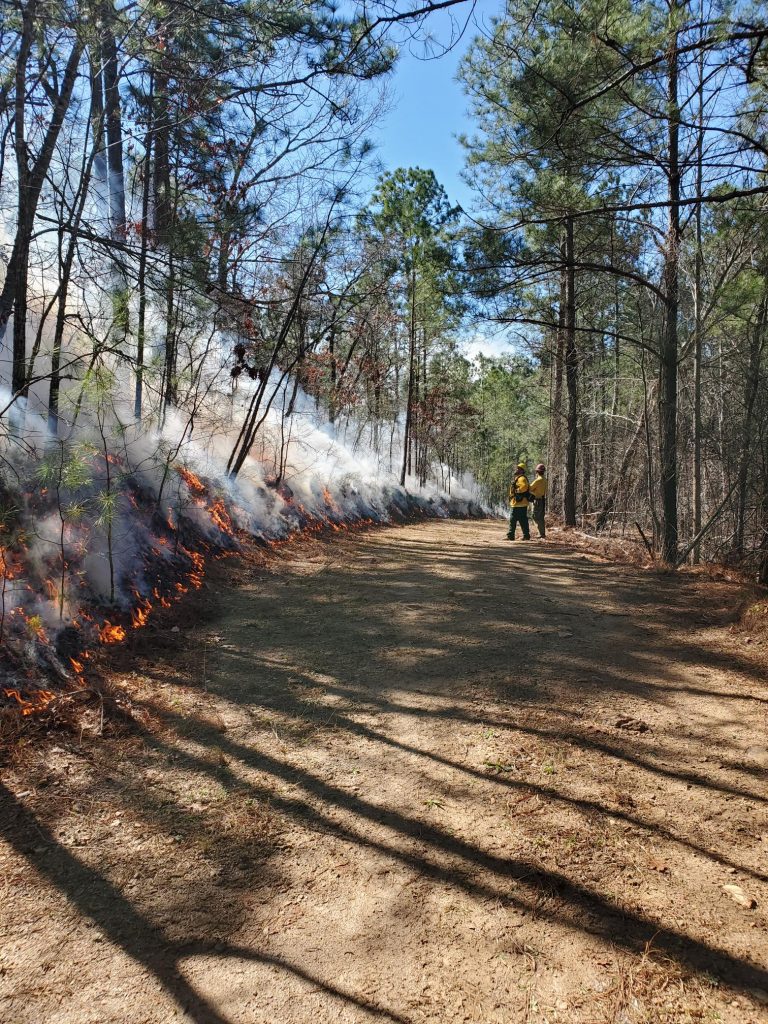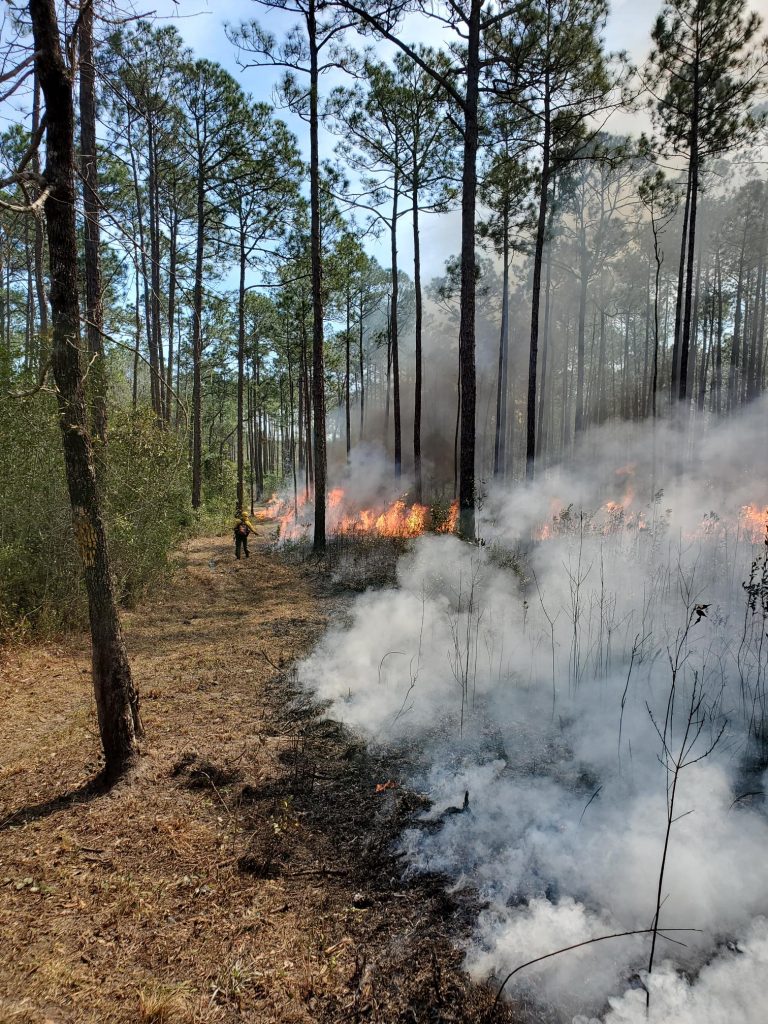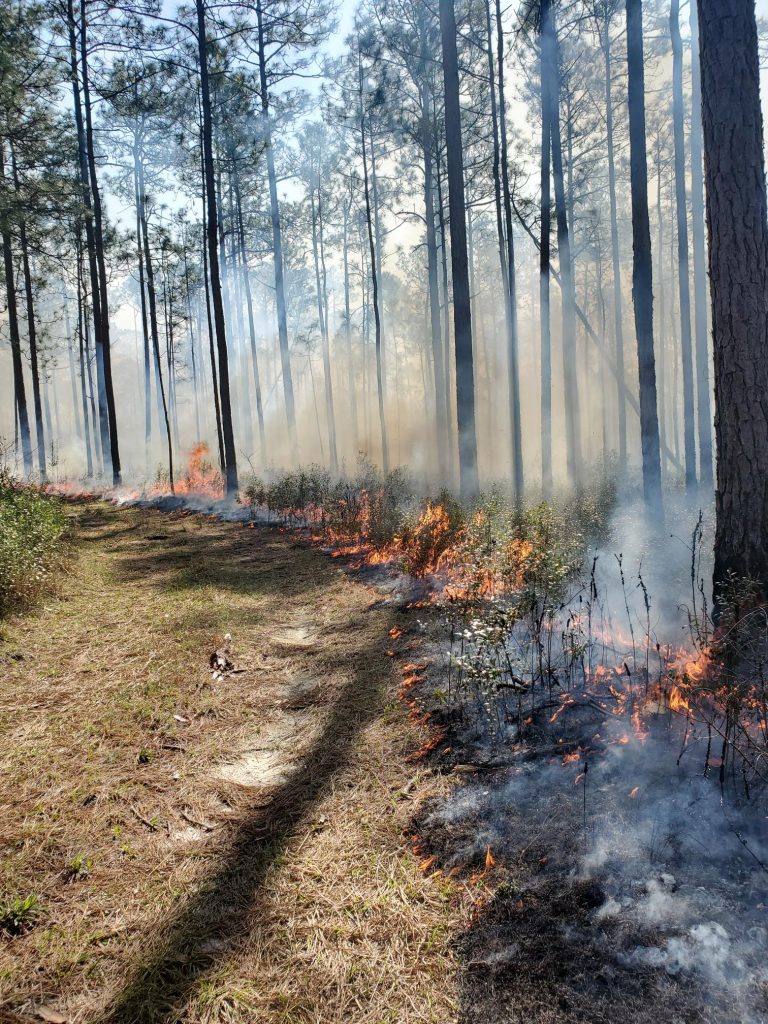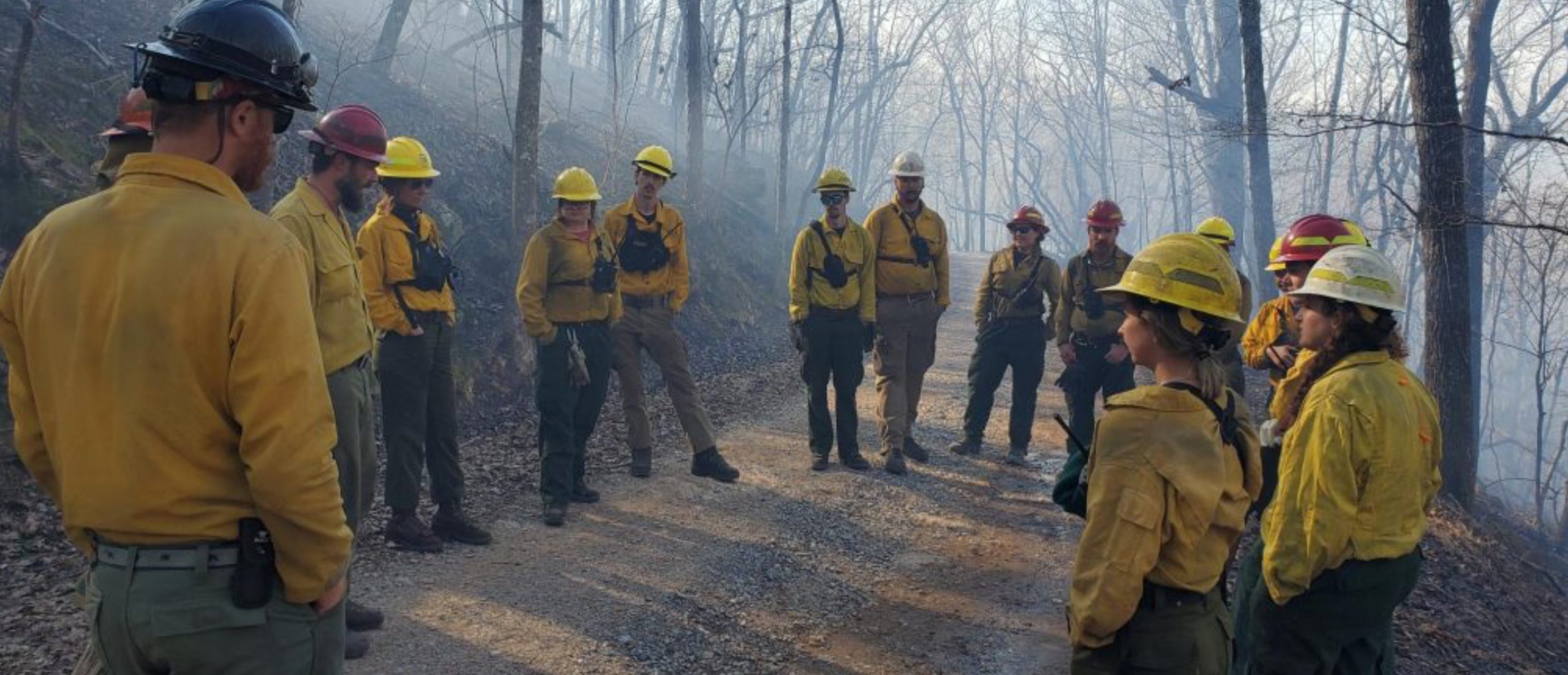Burning for Better
The NWTF and partners are working to mimic nature’s natural disturbance to create the mosaic of early successional habitat that wild turkeys need. But what is early successional habitat?
For the fourth year in a row, the NWTF Alabama State Chapter is helping fund operations for The Nature Conservancy’s Fire Management Program, specifically on focal landscapes within NWTF’s Mid-South Rebirth, a region in its America’s Big Six of Wildlife Conservation.

In Alabama alone, TNC’s Fire Management Program applies prescribed fire on approximately 45,000 acres of high-priority wildlife habitat annually. The Alabama program consists of four prescribed-fire teams that work in unison across the state, managing landscapes on a rotational basis and ensuring optimal habitat for the wildlife and the overall longleaf pine ecosystem health.
“We are working with TNC and partners to restore longleaf pine ecosystems to their historic range, while also creating the early successional habitat longleaf pines, wild turkeys and so many other critters depend upon,” said Derek Alkire, NWTF district biologist for Alabama, Tennessee and Kentucky. “Longleaf pine ecosystems are well-adapted to fire, and wild turkeys thrive in the early successional habitat too.”

Before European settlement, longleaf pine ecosystems dominated the Southeast, extending from Virginia to Florida and expanding as far west as eastern Texas. Today, however, estimates show that longleaf pine ecosystems encompass about 3% of their historic range and are highly fragmented.
Throughout time, longleaf pine ecosystems have depended on naturally occurring fire as a disturbance to set back hardwoods and other pines that would otherwise create more competition for forest resources. Burned, longleaf-dominated forests offer a patchwork of wild turkey habitat, including roosting sites, openings for foraging and brood rearing and provide areas with cover for concealment against predators.
Today, the NWTF and partners are working to mimic nature’s natural disturbance to create the mosaic of early successional habitat that wild turkeys need. But what is early successional habitat?

“Early successional habitats are areas with vigorously growing grasses, forbs, shrubs and trees that provide excellent food and cover for wild turkeys,” Alkire said. “These early successional habitats are abundant within properly managed longleaf pine ecosystems.”
The term “early successional habitat” stems from some of the first ecological studies examining the secondary succession (in layman’s terms, the new growth) of old and abandoned farm fields, according to the USDA Natural Resources Conservation Service.
Additional partners working with the NWTF and TNC to restore the longleaf pine ecosystems and create early successional habitat include the USDA Forest Service, U.S. Fish and Wildlife Service and Alabama Department of Conservation and Natural Resources.
The newly created early successional habitat will benefit wild turkeys as well as many other game and nongame species, including bobwhite quail and red-cockaded woodpeckers.
